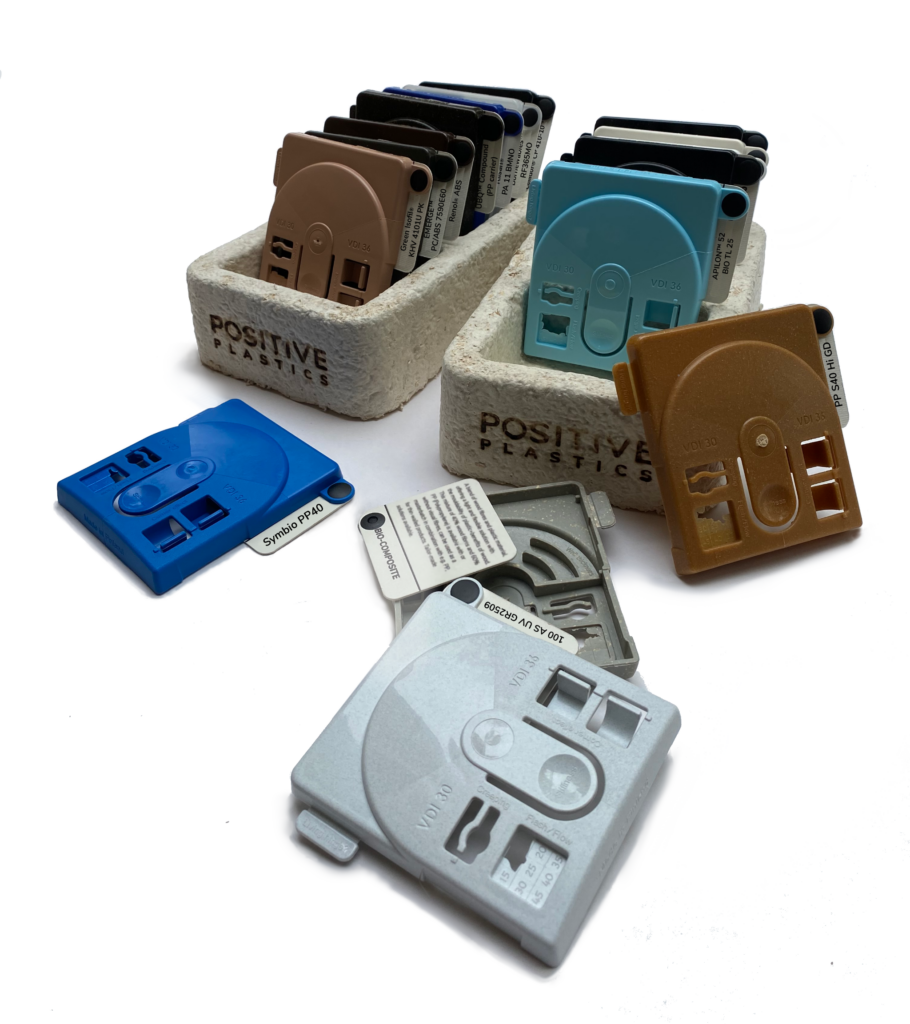Countless new products are put on the market every year. Their sustainability credits are ever more important – but not always transparent. In a society plagued by ‘greenwashing’, fast fashion and badly designed packaging the question remains; how sustainable are our modern-day products really?
Recycling International invites Efrat Friedland, founder of Materialscout and co-founder of Positive Plastics, to take a deep dive into these topics. Besides raising the issue of sustainability at international conferences, she also consults with leading brands on how to embrace circularity. Here are her insights.
How do you look at the products being produced in today’s society?
‘Having studied industrial design two decades ago, I believe I hold a deep understanding of the profession, its challenges and its outcomes. I think the market is saturated with products, as well as with designers. The global economy exploited many designers to produce unnecessary products, purely for the sake of financial growth. The first ones to “wake up” and notice this irresponsible behaviour were the designers. Sadly, they did not have enough power to move the system in a different direction.
This is slowly changing. Nowadays, I believe product innovation should entirely focus on how to change existing products to ones that are circular, long lasting and have a minimal impact on our planet. I am most impressed by companies that have made very bold and risky decisions to create such products.’
What’s the mission of Materialscout?
‘To help designers make knowledgable and intelligent materials choices whilst designing new products and spaces. Material challenges are numerous. When we started eight years ago, we focussed on questions regarding aesthetics, trends, economics, feasibility etc. Like: “How can I sell my headphones for EUR 49.99 more just by changing the material?” or “The PC/ABS blend we are using is too expensive; where can we find a cheaper solution?”

Four years ago, I decided to render our services only to companies that target sustainability, longevity, circular economy, toxicity free solutions, a reduction of processes and materials, etc. I have to say, only a few companies were brave enough to shift their daily routine to accommodate such projects. We were lucky enough to be there for them then, and now 100% of our work is driven by circularity.’
What’s the story behind Positive Plastics?
‘I realised my reach with Materialscout was limited to the brands and designers we were working with. My team was searching for ways to educate more designers and brands. That was the incentive to launch Positive Plastics together with my industry friends Markus Paloheimo and Erik Moth-Müller. We each have our own consultancies and our own network. By joining forces, we found a way to expand it. With Positive Plastics, we hope to launch a new toolkit (see photo) every year; it presents 20 new eco-friendly materials that can replace the virgin polymers currently used.’
What kind of product poses the biggest challenge?
‘The more complex the product is, the more challenges we face in turning it into a circular, carbon-neutral product. Complexity covers the many different materials, parts, assembly methods. White goods, consumer electronics and medical devices are but a few examples.
Let’s look at the mobile phone. Most people see only two materials: glass and metal or glass and plastic. However, counting the different materials inside, these can amount to 30 or more. Each is produced differently, sourced from a different supplier. The question is; how do we assemble them to facilitate easy disassembly? Also; can we reduce the amount of different materials and parts to below 10?
If so, can we accept untreated materials in order to avoid secondary processes (such as lacquering, coating, painting, printing)? Does it make sense to source bio-degradable materials for product A or B? All these questions, and more, should be addressed at the very beginning of the design stage.’
What are your thoughts on recycled content?
‘I am happy to see more and more of our clients and other market players paying attention to their environmental impact. As a result, they are open to consider recycled content. Though changes can be difficult to incorporate.
For example, when it comes to food-grade applications, implementing recycled content is very challenging. Therefore, we should differentiate between mechanical and chemical recycling. The latter can result in a high purity material, practically at virgin-quality. This means it could serve very demanding applications, including the medical industry.
To enable the best result, we usually work with designers and product managers on new product ideas while closely involved with engineers and converters. Together, we cover the specification and validation phases.
I must admit that some companies are pursuing materials that *look* recycled to be more convincing in the eyes of their customers. They reason that, if the material is speckled or has small imperfections, people will believe their message. When, in reality, it could even be a virgin polymer with some sprinkles of a different coloured polymer inside. I hope this trend will be a thing of the past very soon.’
And what about recycling-friendly products? Is this a priority?
‘I think there should be a distinct differentiation between disposable goods and long-lasting products. Especially when it comes to packaging, there is no valid reason to continue using multi-material solutions. If we practice mono-materiality we can achieve much better recycling quotas. And yet, I believe recycling should be the last solution we think of. First of all, products should be easy to disassemble, in order to facilitate repair or remanufacturing. If there is really no other choice, then their parts should be easy to recycle.’
Which companies are frontrunners and which need to step up their game?
‘This is a hard question to answer, and a bit of an unfair one. I would like to believe most companies are trying their best to improve. Some are certainly not doing enough, but most actions are happening behind the scenes and are not visible to our eyes. Adding to that, it’s unfair to judge all industries using the same criteria.
There are super complex industries and ones that are less complex. I could praise Patagonia for being a pioneer for over a decade, back when sustainability was a new topic. But it might be easier for a fashion brand to become circular than it is for a carmaker.’
What do you expect from Extended Producer Responsibility schemes in the future?
‘EPRs were brought to the attention of legislators in the US and Europe years ago. If only they would have been accepted as mandatory back then, the situation would be far better now. As always, collaboration is key. Imagine if every producer had its own take-back scheme… This could lead to a global catastrophe. Instead, if brands from the same industry collaborate, incentivise their customers to participate and centralise logistics, they will surely profit from it in the long run.
We always advise our clients to start drafting take-back plans as soon as possible. After all, the materials they use are extremely valuable. In the reality of today, with brands striving for high-quality recyclates, it only makes sense to remain the owner of your materials and make sure they return to you.’
The idea of a ‘materials passport’ has come up recently. Are you in favour?
‘I think that’s a very interesting topic and am looking forward to the day it becomes our reality. In fact, I am organising a panel discussing the Digital Product Passport, to be held at the Greener Manufacturing Show in Köln from 9-10 November. Personally, I believe such a passport is key for the implementation of a successful circular economy. Not only will the users and customers be able to make informed decisions, but it will enable a much more efficient sorting system.
I have the feeling that very few producers are aware of material/product passports right now. Adding to the challenge is the fact that various stakeholders are involved — with very polarised opinions. I understand commercial parties may be concerned about revealing their intellectual properties.’
We tend to take sustainability reports with a grain of salt. Agreed?
‘We should be careful judging companies that go public with their reports. Having said that, we must be very critical and ask questions. Today, I find it hard to believe corporate statements claiming the company will be carbon neutral or even carbon negative by 20XX. Carbon offsetting is not much different than sending your plastic waste to a less developed country. It’s shoving the problem elsewhere and not really dealing with it.
Companies might have found solutions for their scope 1 and scope 2 carbon reduction goals . However, scope 3 is something most companies have very little knowledge of, let alone control over. Reducing emissions across all scopes should be the immediate goal. Eliminating them, even better.’
How do you think sustainability will evolve in the next 10-15 years?
‘I think the first and biggest change needs to happen on a societal level. Consume to the minimum, cherish and hold on to the maximum; that’s the way. If we succeed in doing this, it will dictate a totally different understanding and creation of products, and their design.’
Don't hesitate to contact us to share your input and ideas. Subscribe to the magazine or (free) newsletter.



